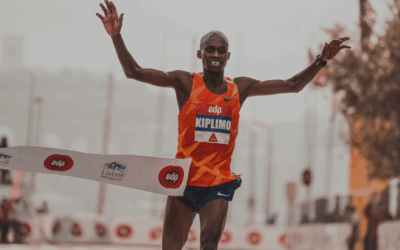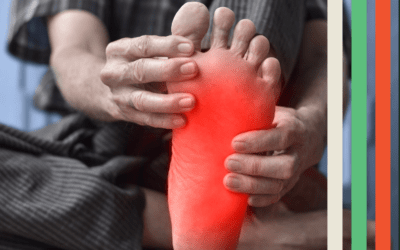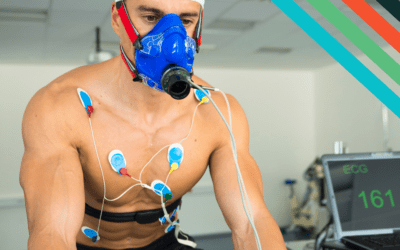Introduction to Foot Function
If you’ve been following us over the past 3 years, you may have noticed that we have started to incorporate a lot more foot, arch, and lower limb strengthening exercises.
Do this quick test to illustrate a point we make often. Try this motion in the video below, then keep reading:
When you stand upright normally, and rock your foot/ankle onto the outside edge of your foot, you will notice that your shins externally rotate towards the outside of your body, and your kneecaps and femurs do the same. You might even notice a change in your hips/low back towards more posterior pelvic tilt, as the motions are linked.
When you do the second half of the mini-experiment, and rock your foot/ankle to the inside edge of your foot, you will notice that your shins internally rotate towards the midline of your body, and your kneecaps and femurs do the same. Your hips/low back will have a tendency towards more anterior pelvic tilt, and you might notice your low back arching.
This is all relevant to the post you came here to read – so stick with me!
Most people we see in the gym have a greater tendency towards the latter experiment. The problem is, creating a kneed-in position tends to create knee genu-valgum, simply a term that means the knees collapse inwards, which some research has shown puts our knees at risk for some soft-tissue injuries (namely, ACL tears, medial meniscus damage, MCL tears, or even IT band syndrome or patello-femoral pain).
Traditionally, strength coaches and trainers might look at the solution for knee genu valgum as glute strengthening. You’ll often see the use of mini-bands around the knees used to prevent this collapse.
But, we will argue that while isolating the glutes could be helpful, but is not addressing the bigger picture. When, in sport, are you standing balanced on both feet at the same time with the knees pressing out? How many times do we have individuals coming to us saying that the knee, hip or ankle pain has not gone away with “glute strengthening”. When you get your client out of the mini band, and ask them to use their glutes while in a unilateral stance, how many report the ability to still feel their glutes?
Perhaps you are reading this thinking, “this is me!”
What if the glutes, in isolation, are just a piece of the puzzle.
Could ankle strength be the missing puzzle piece? In this blog, we will help you find out.
What is Pronation?
Pronation is a natural and necessary movement of the foot during walking and running, but when excessive or uncontrolled, it’s possible that it can lead to problems.
Ankle pronation is technically a coupled movement of the ankle, arch, and foot, which in technical terms is paired movement of ankle dorsiflexion, rearfoot eversion, and forefoot abduction (Ferber & MacDonald, 2014).
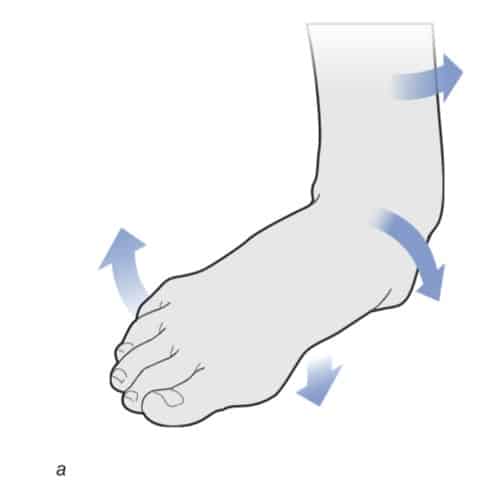
Figure 1. The coupled motion of pronation at the ankle.
What is Supination?
Ankle supination then, is technically the exact opposite of ankle pronation, and is a coupled movement of the ankle, arch, and foot, which in technical terms is paired movement of ankle plantarflexion, rearfoot inversion, and forefoot adduction (Ferber & MacDonald, 2014).
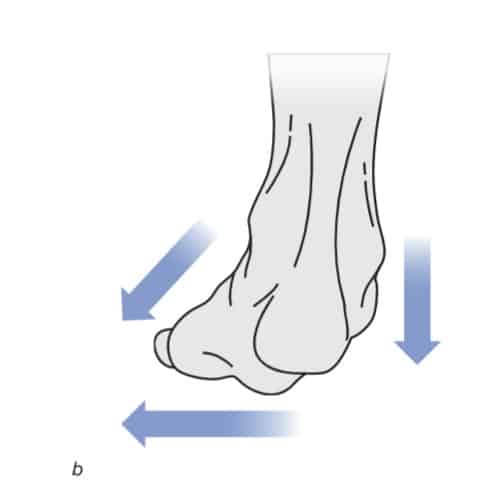
Figure 2. The coupled motion of supination at the ankle.
Overpronation
Overpronation is sometimes the term people use when they are referring to excessive rearfoot eversion. “Excessive rearfoot eversion, eversion velocity, and time to maximum eversion
have been implicated as contributing factors to overuse running injuries” (Ferber & MacDonald, 2014), which is why it is a highly pertinent topic of discussion.
This “overpronation” so to speak occurs when the foot rolls too far inward, causing the arch to collapse and leading to a flat-footed gait. Some research has pointed to these contributing to issues including plantar fasciitis, shin splints, and knee pain, though other studies have not been as conclusive on the topics (Ferber & MacDonald, 2014).
“Based on these data, and contradictory results from the various retrospective cross-sectional studies outlined previously, no definitive answer can be put forth regarding potential running-related injury mechanisms and excessive foot pronation. As such, atypical foot biomechanics may not be the root cause, or rarely the sole factor, in understanding the etiology or in developing the subsequent treatment of any given lower extremity injury. Other factors, such as anatomical alignment, strength, and flexibility must also be considered.“ (Ferber & MacDonald, 2014).
Quick Navigation
- Intro to foot Function
- What is Pronation and Supination?
- A Great Pronation and Supination Analogy
- The Importance of the foot and arch for proper foot function
- The Importance of Proper Pronation for Runners
- The Importance of Proper Supination for Runners
- How to know if you’re pronating or supinating too much or not enough
- Exercises to Improve Pronation and Supination for Running
- Conclusion
- References
![[Original size] Scan QR (1)](https://vitalstrengthphysiology.com/wp-content/uploads/2022/06/Original-size-Scan-QR-1.png)
Curious how to implement this into a full 8-week foot-rehab program? Look no further…
A Great Pronation and Supination Analogy
Understanding complex concepts can be challenging, especially if they involve technical jargon or intricate details. This is where analogies can be incredibly helpful. Analogies can simplify complex ideas by drawing parallels with familiar objects or activities, making them easier to comprehend and remember. Analogies provide a relatable framework that can be used to understand new ideas and connect them to existing knowledge. In this section, we will use the analogy of mountain biking shocks to explain the mechanics and importance of pronation and supination in runners. By using analogies, we can gain a deeper understanding of complex concepts and learn how to apply them in practical settings.
The analogy of mountain bike shocks and pronation and supination at the ankle in running is used to explain the importance of having appropriate shock absorption and support in both mountain biking and running.
When mountain bike shocks are nice and tight, they act like a strong and springy arch in the foot. This means that when you land from a high surface, the shocks help to absorb the impact and then bounce you back off the ground into the next springy step. This is similar to the way that a strong arch in the foot helps to absorb impact forces during running and then bounces you back off the ground into your next stride.
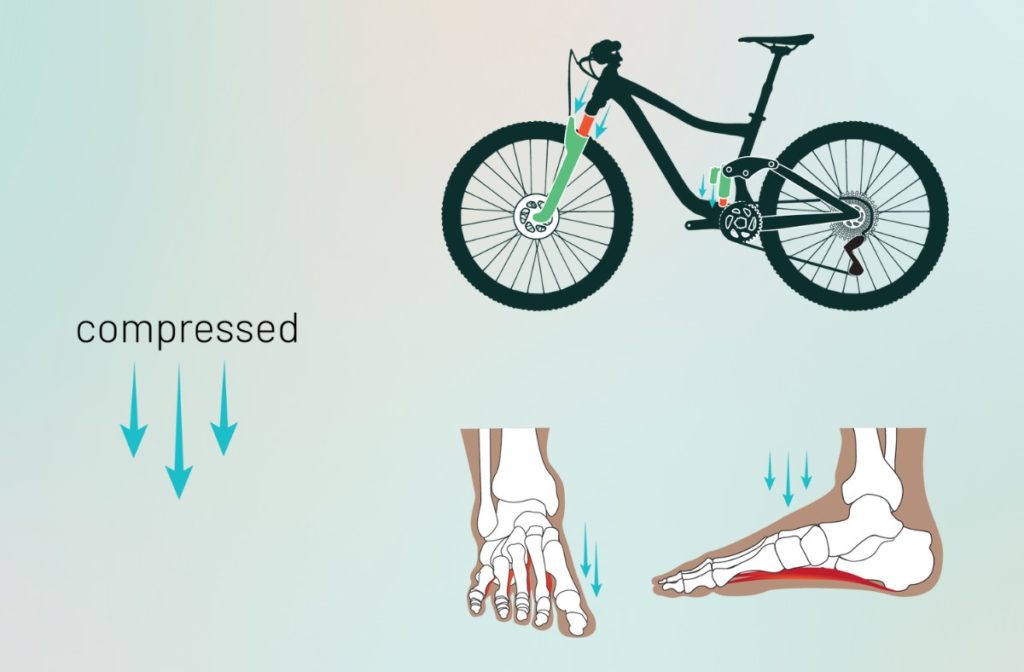
However, if the mountain bike shocks are too loose, you will get compressed into the ground from the same high landing. This is similar to what happens when someone’s arch collapses, causing their foot to pronate excessively. In this situation, the foot is not able to absorb impact forces effectively, and the runner is more likely to experience injuries and discomfort.
Therefore, just like you want your mountain bike shocks to be appropriately tightened to assist you off the ground into the next springy step, you also want your arch to be strong and supported during running to absorb impact forces and provide an efficient push-off for your next stride.
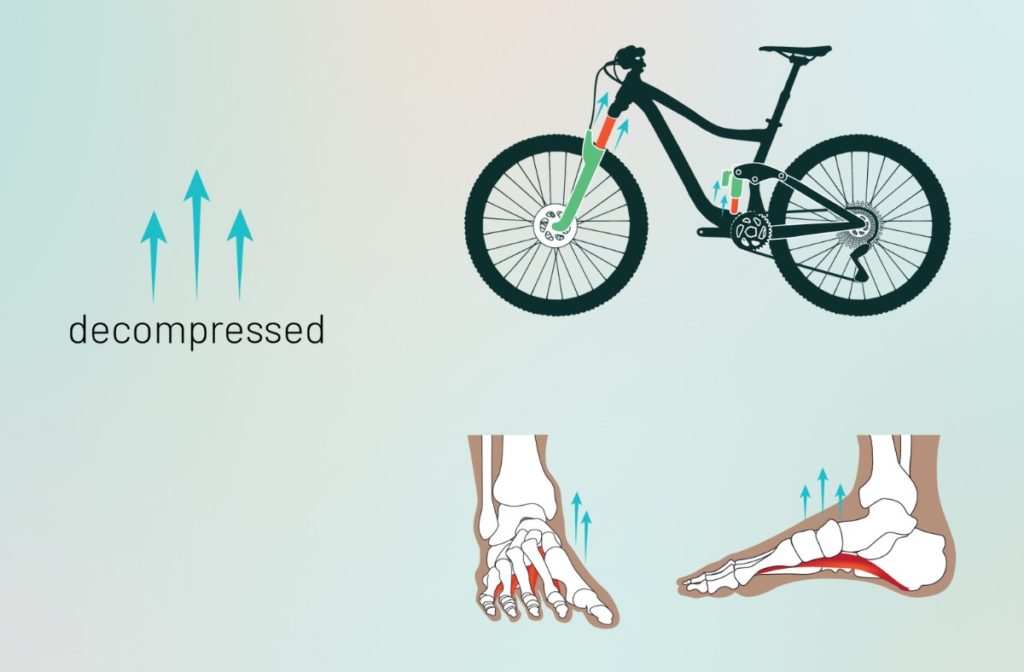
The Importance of the foot and arch for proper foot function
The foot is a complex structure consisting of 26 bones, 33 joints, and numerous muscles, tendons, and ligaments. It is designed to support the body’s weight and absorb shock during activities like running. The arch of the foot is particularly important for proper foot function, as it acts as a natural shock absorber and helps distribute weight evenly across the foot.
When the arch is not functioning properly, the foot can become unstable, which can lead to issues or injuries like overpronation-related injuries, or the foot becoming stuck in supination-type shapes. This is why it’s important for runners to take care of their feet and maintain the health of their arches through exercises, proper footwear, and other preventative measures. In addition, maintaining good foot health can also help prevent issues with other parts of the body, such as the knees, hips, and back, which can be affected by improper foot function.
The following research snippets have been included for additional context into recent findings into the importance of the foot.
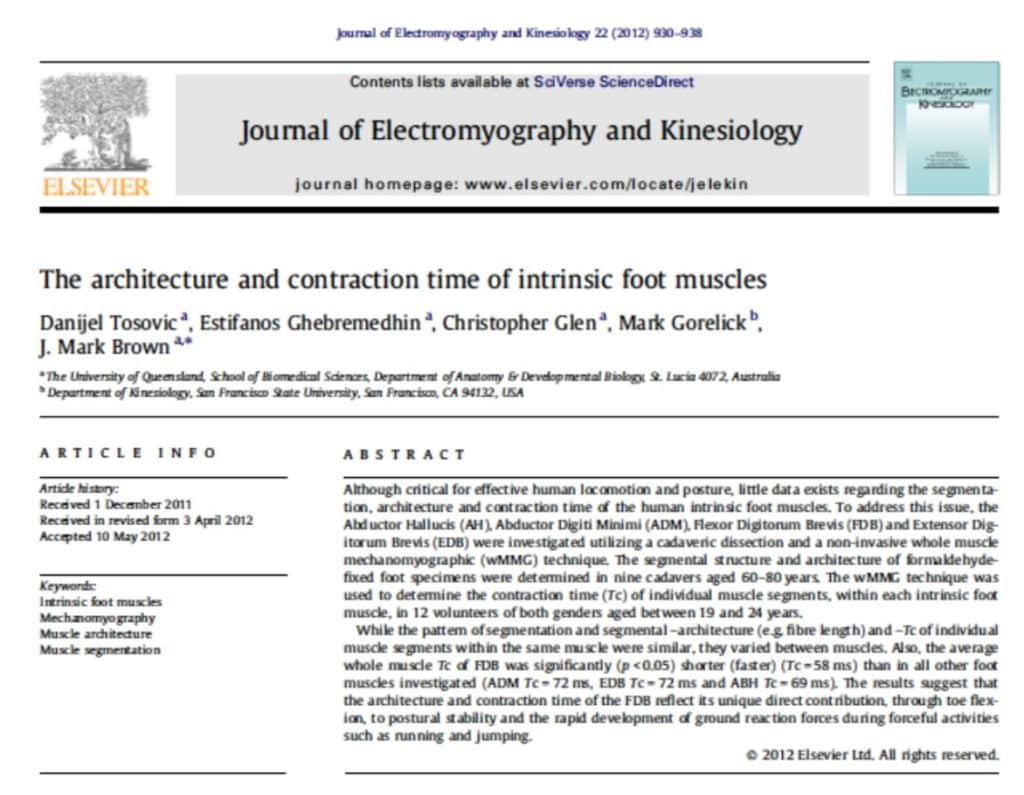
In the study above, Tosovic et al (2012), investigates the architecture and contraction time of the intrinsic foot muscles. The study was conducted on cadavers and involved the dissection of the foot to measure muscle architecture and to determine the time it takes for the muscles to contract. The results showed that the intrinsic foot muscles have a complex architecture that allows for a wide range of movements and that the muscles have a relatively fast contraction time. Overall, the authors found that one of the arch muscles (specifically the flexor digitorum brevis – an intrinsic foot muscle) contributed significantly to force development in running and jumping.
This finding stood out to me because most clinicians and practitioners place so little emphasis on the foot intrinsic muscles as compared to the larger more obvious muscles like quads, glutes, and calves for running and jumping. These findings do seem to point our interest in the direction of paying more attention to the small muscles, though.
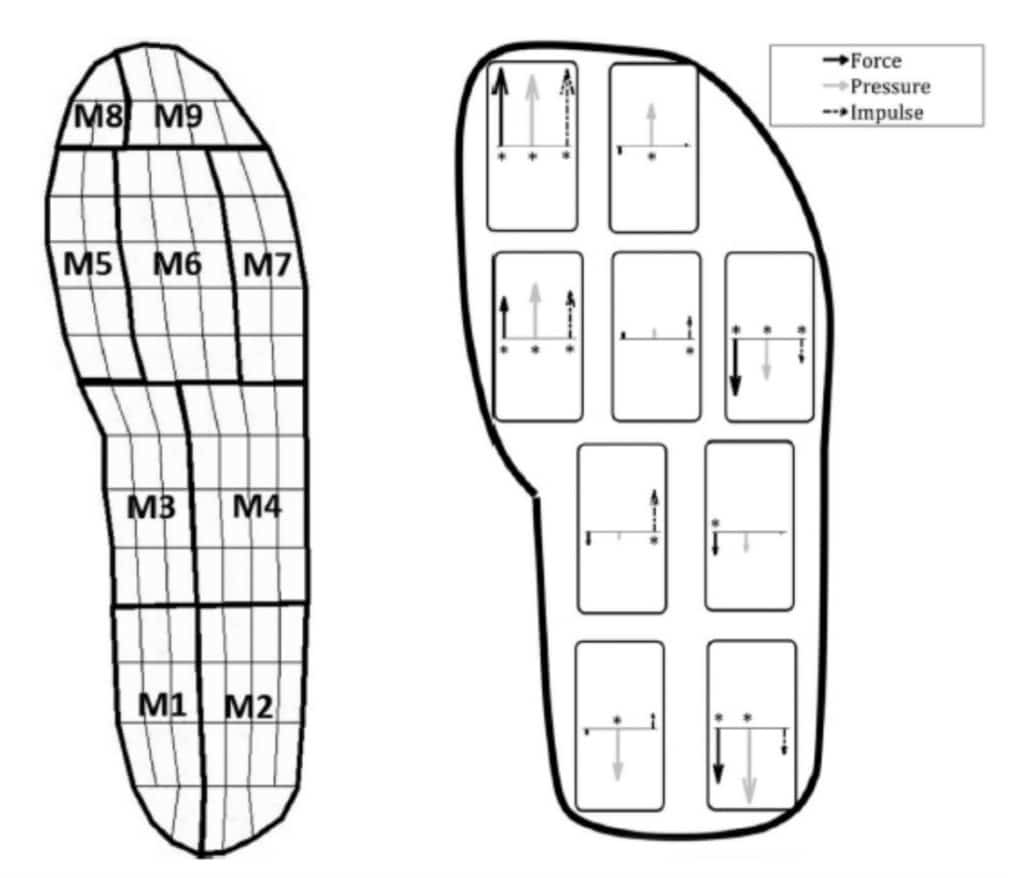
Figure 3. Left Panel: Division of pressure insole sensor array into 9 sections: M1- Medial Heel, M2- Lateral Heel, M3- Medial Midfoot, M4- Lateral Midfoot, M5- First Metatarsal, M6- Second to Third Metatarsal, M7- Fourth to Fifth Metatarsal, M8- Hallux, and M9- Toes.
Right Panel: Changes in peak force (solid black line), peak pressure (grey line), and impulse (brake line) in different foot regions before and after a 30-minute run. The arrows are scaled based on the maximum magnitude of each parameter. Asterisks indicate significant differences (p< 0.05) between pre- and post-run measurements.
The above foot drawings were pulled from an article by Bercovitz et al (2020) in which they examined the changes in plantar pressure patterns of experienced runners after an exhaustive run. The study found that the runners’ plantar pressure patterns changed significantly after the run, indicating that fatigue may alter the way runners distribute pressure on their feet.
You’ll notice from the drawings on the right panel that the things that stand out are: an increase in force, pressure and impulse on the medial (big toe) side of the foot after the exhaustive run, and decreases in force, pressure, and impulse on the lateral (outside) of the foot. The researchers suggest that understanding these changes could help develop strategies to reduce the risk of injury in runners.
The conclusion of this study was:
“A 30-minute exhausting run caused a medial and anterior shift of the plantar-pressure map and CoP trajectory curve. The fatigued state after high-intensity training sessions or races might promote these changes which increase stress on joints and tissues and may be part of the underlying mechanism for overuse injuries. This should be considered when discussing running-related injuries or lower-limb pathologies. Furthermore, the verification of the effect of running induced fatigue on CoP provides an additional spatiotemporal variable that can be measured in real-time under in-vivo conditions. This will broaden future running related research possibilities and enhance the development of training tools.”
To further the researchers point, I believe sometimes there is an over-focus in the strength and conditioning and physiotherapy worlds on pronation. Yes, it is important to have the ability to pronate your foot and to absorb the shocks and forces in running, but if the changes we see in the biomechanics of the foot and ankle when fatigued are towards a more pronated and everted shape, we should use this information to structure our strength and rehab programs accordingly.
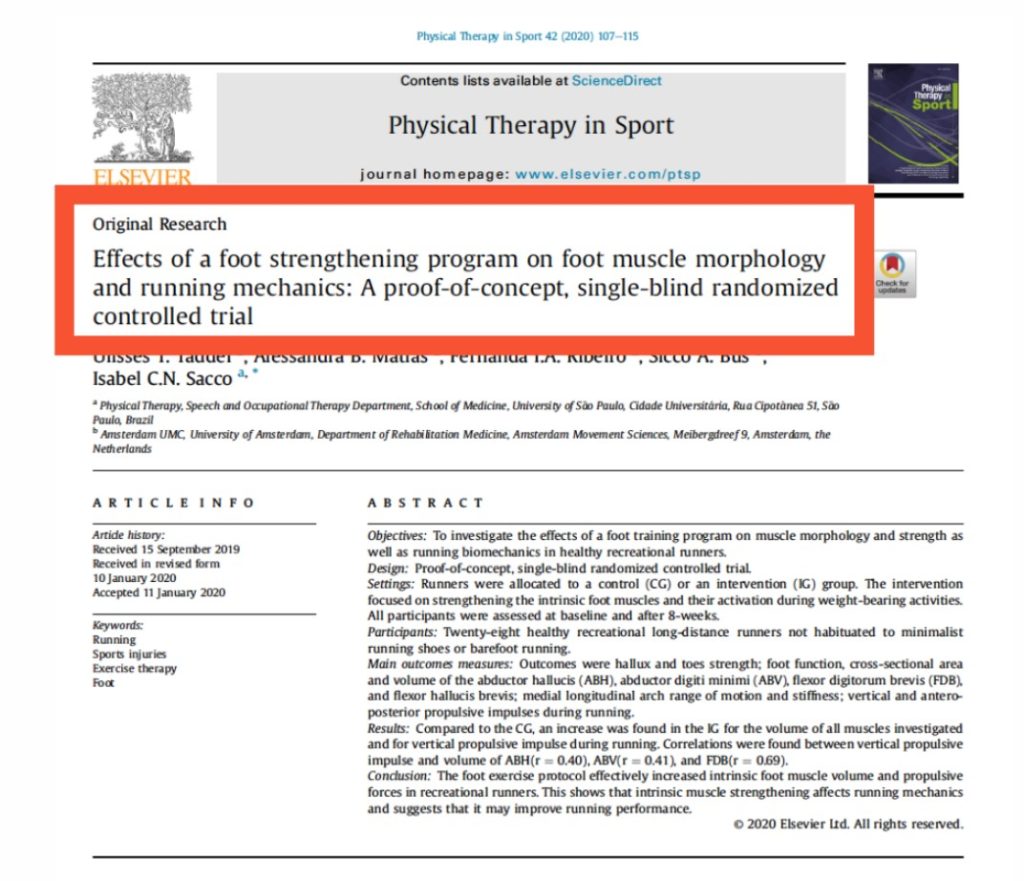
In the above article by Taddei et al (2020), the group looked at the effects of a foot strengthening program on foot muscle morphology and running mechanics. The article is a proof-of-concept, single-blind randomized controlled trial that investigates the effects of a foot strengthening program on foot muscle morphology and running mechanics.
The study found that the program led to improvements in foot muscle strength, morphology, and running mechanics, including a reduction in peak pressure and force during running. They utilized exercises for the foot though these specific exercise videos were not linked in the study and it was difficult to determine the source of the exercises they used (apparently outlined in Matias et al, 2016). This is unfortunate because sometimes the execution of exercises make the difference between them being effective, or ineffective, to even injurysome, yet we could not find a specific list.
The researchers suggest that incorporating foot strengthening exercises in training programs may improve running performance and reduce the risk of injury.

The article by Hamel et al (2001) examines the contributions of active and passive toe flexion to forefoot loading. I was interested in this study because I have heard and been told before in my running and foot strengthening journey that flexing the toes into the ground was injurious or the wrong brain patterning for the foot. This seemed counter intuitive to me because when I personally grip and flex my toes, it can help me to balance in certain single leg exercises. Plus, I didn’t think that a muscle contraction, in and of itself, especially that appears to happen in so many individuals naturally for balance and pushing off of the ground, could be maladaptive.
The study recruited healthy individuals and measured their forefoot pressure distribution while they performed several tasks, including walking, running, and jumping, with different levels of active and passive toe flexion.
The results suggest that both active and passive toe flexion play important roles in forefoot loading. Active toe flexion increased forefoot pressure and shifted it towards the lateral side, while passive toe flexion decreased forefoot pressure and shifted it towards the medial side. The study also found that different tasks had different effects on forefoot loading, and that the contributions of active and passive toe flexion varied depending on the task.
The authors concluded that understanding the contributions of active and passive toe flexion to forefoot loading can be important in the development of footwear and rehabilitation programs for foot-related injuries.
In other words, lacking either toe flexors or plantar fascia will decrease force under the toes, and shift the pressure to the metatarsal heads of the foot. My interpretation is that this decreases the force dispersion and due to the more concentrated forces on that area, could potentially cause more injury there.
![[Original size] Scan QR (1)](https://vitalstrengthphysiology.com/wp-content/uploads/2022/06/Original-size-Scan-QR-1.png)
Curious how to implement this into a full 8-week foot-rehab program? Look no further…
The Importance of Proper Pronation for Runners
Pronation is a normal motion of the foot that occurs when the foot rolls inward after the heel strikes the ground. However, excessive or prolonged pronation can lead to several injuries in runners, including:
- Plantar Fasciitis: Pronation can cause excessive strain on the plantar fascia, leading to inflammation and pain in the heel and arch of the foot.
- Medial Tibial Stress Syndrome (Shin Splints): Overpronation can cause overloading of the muscles and tendons in the lower leg, leading to pain along the inside of the shin.
- Patellofemoral Pain Syndrome: Overpronation can cause the patella (kneecap) to track incorrectly, leading to pain around the front of the knee.
- IT Band Syndrome: Overpronation can cause the iliotibial (IT) band to become tight and inflamed, leading to pain on the outside of the knee.
- Achilles Tendinitis: Overpronation can cause excessive stress on the Achilles tendon, leading to inflammation and pain in the back of the heel.
It is important to note that not all runners who overpronate will experience these injuries. The extent to which overpronation contributes to injury risk depends on factors such as the individual’s foot structure, training volume, and running mechanics. It is always a good idea for runners to seek professional advice if they are experiencing pain or discomfort. A trained professional can help diagnose the underlying cause of the pain and develop a personalized treatment plan.
Just as you can’t necessarily predict whether or not someone will get injury if they simply have high or low arches, or a pronated or supinated foot shape, the figure below is from Nigg et al (2015) and outlines how some pronation can be injury-saving, but too much of it could produce a higher injury rate:

In an article by Benno Nigg (2001), he challenges the current paradigms about running related issues being caused by pronation. This article is about running-related injuries and how they might be caused. People who run or jog often get injured, and researchers have looked into what might be causing these injuries. Some people thought that the impact of the foot hitting the ground was a major cause of injuries, and that special shoes or inserts could help reduce these impacts. However, recent studies have challenged this idea.
The article proposes two new ideas about how the body works during running. The first idea is that impact forces actually help muscles prepare for the next foot contact with the ground, instead of causing injuries. The second idea is that the body naturally adjusts to keep the feet and legs moving in a certain way during running, and that special shoes or inserts might not be as helpful as previously thought.
The article suggests that more research is needed to test these new ideas. The ultimate goal is to help runners avoid injuries and improve their performance.
A more recent follow up article by Nigg et al (2019), dove a little deeper and included more updates on the importance and current knowledge about pronation. They summarize that people used to think that too much pronation could cause injuries or that it helped absorb shock when you land on your foot. However, they admit that we still don’t know a lot about pronation. Scientists have had a hard time measuring it because it happens deep inside your foot, and they’ve used different ways to approximate how much your foot pronates. Despite its importance, there’s still a lot we don’t understand about pronation, and some of the things we thought we knew about it might not be true.
The Importance of Proper Supination for Runners
Supination, also known as underpronation, is a type of foot motion where the foot rolls outward, placing more weight on the outside edge of the foot. This motion can cause several injuries in runners, including:
- Plantar Fasciitis: Supination can cause excessive strain on the plantar fascia, which is the band of tissue that connects the heel bone to the toes. This can lead to inflammation and pain in the heel and arch of the foot.
- Shin Splints: When the foot under-pronates, it places extra stress on the muscles and tendons in the shin. This can cause inflammation and pain in the front of the leg.
- Ankle Sprains: Supination can make the ankle more unstable, increasing the risk of rolling or twisting the ankle, which can lead to sprains.
- IT Band Syndrome: Supination can also cause the iliotibial (IT) band, which runs from the hip to the knee, to become tight and inflamed. This can cause pain on the outside of the knee.
- Stress Fractures: Supination can increase the risk of stress fractures, especially in the foot and ankle, as the weight is not distributed evenly across the foot.
It’s important for runners to choose shoes that are comfortable for them, and to use proper running form to prevent injury. Yes – there’s even research to support wearing shoes that are comfy:
“It seems that some basic rules are still valid, such as the subjective feeling of comfort when choosing a pair of running shoes, transitioning progressively and carefully into a new pair, and listening to your body when training.” – (Malisoux, 2020)
If you are experiencing pain or discomfort while running, it’s always best to consult with a medical professional.
How to know if you’re pronating or supinating too much or not enough
Although many research studies exist to explore this exact problem, we currently don’t have solid evidence to be able to clearly tell you when you are pronating or supinating too much – or not enough! This might come as a shock to you as you might be one of the millions of runners who has walked into a running store in their lifetime and been categorized as one or the other with the salesman’s motivation of getting you to drop money on shoes.
The literature available tends to sing these common threads:
1. We cannot predict based on someone’s over or under-pronation alone whether or not they will get injured or develop running-related injuries.
2. There’s no single movement pattern universally in running that sets someone up for more injuries.
3. There is some evidence to show that pronation outside of the normal amounts could lead to additional stress to the tissues that control that pronation (perroneal muscles on the outside of the shin, tibialis anterior muscle on the front of the shin, and tibialis posterior on the inside of the shin, primarily).
While there isn’t any great way of knowing if you’re pronating or supinating *too much*, you can use this simple schematic to evaluate with no or low tech.

In the first schematic above, we’ve drawn the natural tendency of the body to pair supination of the foot with shin and femur external rotation. These three tend to be all paired up during gait. On the other end of the spectrum, pronation is typically paired with tibial internal rotation along with femoral internal rotation. This is because the body absorbs the ground through length of the arch and other leg muscles when it lands on the ground during the stance phase of a run or walk stride.

In the schematic above, we’ve drawn a simple red line to indicate the direction of the knee. We suggest that you eyeball the knee: if the knee is pointing outside of the toes, you have more ER (external rotation), if the knee is pointing inside the toes, you have more IR (internal rotation).
Exercises to Improve Pronation and Supination for Running
Pronation and supination are important movements of the foot that help runners maintain stability and absorb shock during each stride. However, excessive or inadequate pronation and supination can lead to various foot and ankle injuries, such as plantar fasciitis, Achilles tendinitis, and stress fractures. Therefore, exercises that target these movements can be beneficial for runners to improve their foot and ankle strength, stability, and flexibility, and reduce the risk of injuries. This article will discuss some effective exercises to improve pronation and supination in runners, along with their benefits and proper techniques.
Here’s a list of 2 exercises to help improve pronation, and 2 exercises to help with supination. Enjoy! And if you need more, head to Foot Foundations.
Lacking Pronation? Try These 2 Exercises:
- Self Myofascial Release with a Lacrosse Ball: this exercises will help to loosen and mobilize the tight muscles below your foot and in your arch that could be pulling your foot into too much supination and locking the foot there, not allowing it to pronate.
- Big Toe Calf Raise: once you’ve released the area, we need to some some strength and patterning work to teach the area to accept load more readily and adapt to be stronger in the future. This drill helps teach you to reconnect to the inside edge of your foot again.
Lacking Supination? Try These 2 Exercises:
- Arch Winding: this exercise will help teach a very flat or weak foot how to engage the intrinsic foot muscles and create a better arch than with the typical towel foot scrunch exercise. This drill will help teach your foot how to put more pressure on the outside edge again.
- Pronation to Supination Calf Raise: this exercise will start in a flat-foot position of pronation, but help you learn to pull out of that position towards supination. This is a beneficial drill for those lacking supination because it can help runners get out of pronation faster to help decrease ground contact time (for more speed) and pull out of the potentially injurious positions more quickly.
Conclusion
In conclusion, pronation and supination are essential movements for runners to maintain proper foot and ankle biomechanics during each stride. While excessive or inadequate pronation and supination can lead to various injuries, such as plantar fasciitis, Achilles tendinitis, and stress fractures, moderate and controlled movements can enhance runners’ performance, reduce their risk of injuries, and improve their overall foot and ankle health. Understanding the importance of pronation and supination and incorporating exercises to strengthen, stabilize, and stretch these movements can help runners achieve their goals, whether it’s running a marathon or just staying active and healthy. Therefore, runners should pay attention to their foot and ankle mechanics, seek professional advice if needed, and practice proper techniques and exercises to optimize their running experience.
Need more help with your feet? Visit Foot Foundations for more info.
References
Bakowski, A. P., et al. (2012). Patellofemoral Pain Syndrome: A Review and Guidelines for Treatment. Physical Therapy in Sport, 13(3), 173-181. doi: 10.1016/j.ptsp.2011.07.004
Bercovitz, T., Herman, A., Solomonow-Avnon, D., Wolf, A., & Kodesh, E. (2020). Plantar pressure modifications in experienced runners following an exhaustive run. Sports Biomechanics. https://doi.org/10.1080/14763141.2020.1743744
Burnham, J. M., & McKinney, J. A. (2016). Achilles Tendinopathy. American Family Physician, 94(8), 649-656. PMID: 27731968
Caselli, M. A., & Weil Jr., L. (2006). Stress fractures of the foot and ankle. Clinics in Podiatric Medicine and Surgery, 23(1), 129-149.
Ferber, R., & Macdonald, S. (2014). Running mechanics and gait analysis.
Hamel, A. J., Donahue, S. W., & Sharkey, N. A. (2001). Contributions of Active and Passive Toe Flexion to Forefoot Loading From the Center for Locomotion Studies, the Department of Mechanical Engineering, the Department of Kinesiology. In CLINICAL ORTHOPEDICS AND RELATED RESEARCH (Vol. 393).
Kudo, S., Sakamoto, K., & Rpt, S. (2020). Comparison of foot kinematics and the morphology of intrinsic musculature of the foot using a foot-type classification based on function. Journal of Physical Therapy Science, 32(1), 238–242.
Malisoux, L., & Theisen, D. (2020). Can the “Appropriate” footwear prevent injury in leisure-time running? evidence versus beliefs. Journal of Athletic Training, 55(12), 1215–1223. https://doi.org/10.4085/1062-6050-523-19
Matias, A. B., Taddei, U. T., Duarte, M., & Sacco, I. C. N. (2016). Protocol for evaluating the effects of a therapeutic foot exercise program on injury incidence, foot functionality and biomechanics in long-distance runners: A randomized controlled trial. BMC Musculoskeletal Disorders, 17(1). https://doi.org/10.1186/s12891-016-1016-9
Nigg, B. M., & nat, sc. (2001). The Role of Impact Forces and Foot Pronation: A New Paradigm. https://journals.lww.com/cjsportsmed
Nigg, B. M., Baltich, J., Hoerzer, S., & Enders, H. (2015). Running shoes and running injuries: Mythbusting and a proposal for two new paradigms: “Preferred movement path” and “comfort filter.” In British Journal of Sports Medicine (Vol. 49, Issue 20, pp. 1290–1294). BMJ Publishing Group. https://doi.org/10.1136/bjsports-2015-095054
Pezzullo, D. J., & Manson, T. T. (2005). Iliotibial band syndrome: A common source of knee pain. American Family Physician, 72(5), 817-822. PMID: 16156341
Ross, S. A., Rimkus, B., Konow, N., Biewener, A. A., & Wakeling, J. M. (2020). Added mass in rat plantaris muscle causes a reduction in mechanical work. The Journal of Experimental Biology, jeb.224410. https://doi.org/10.1242/jeb.224410
Shank, J. R., & Harrast, M. A. (2003). Ankle sprains: Evaluation and treatment. American Family Physician, 68(9), 1779-1786.
Sorenson, J. D., & Myerson, M. W. (2009). Plantar fasciitis: Diagnosis and therapeutic considerations. Clinics in Podiatric Medicine and Surgery, 26(3), 369-380. doi: 10.1016/j.cpm.2009.04.005
Swisher, K. L., & Mautner, K. L. (2016). Shin splints: Diagnosis, treatment, and prevention. American Family Physician, 93(2), 111-116.
Taddei, U. T., Matias, A. B., Ribeiro, F. I. A., Bus, S. A., & Sacco, I. C. N. (2020). Effects of a foot strengthening program on foot muscle morphology and running mechanics: A proof-of-concept, single-blind randomized controlled trial. Physical Therapy in Sport, 42, 107–115. https://doi.org/10.1016/j.ptsp.2020.01.007
Thacker, D. I., et al. (2012). Medial Tibial Stress Syndrome (Shin Splints): A Review of the Evidence. Sports Health, 4(3), 164-172. doi: 10.1177/1941738112439687
Tosovic, D., Ghebremedhin, E., Glen, C., Gorelick, M., & Mark Brown, J. (2012). The architecture and contraction time of intrinsic foot muscles. Journal of Electromyography and Kinesiology, 22(6), 930–938. https://doi.org/10.1016/j.jelekin.2012.05.002
Yue, S. W. (2007). Influence of the abductor hallucis muscle on the medial arch of the foot: A kinematic and anatomical cadaver study. Foot and Ankle International, 28(5), 617–620. https://doi.org/10.3113/FAI.2007.0617

More About The Author
Carla Robbins, Owner of Vital Strength and Physiology Inc
Carla’s journey into the world of endurance training, strength and conditioning, and exercise physiology began with her Undergraduate Degree in Exercise Physiology at the University of Calgary and continued into her graduation with a Master’s in Exercise Physiology in 2016. Between working for the Canadian Sports Institute to the creation of her company Vital Strength and Physiology Inc, Carla is driven by a desire to find better ways to address complex cases in professional and everyday athletes and individuals.

